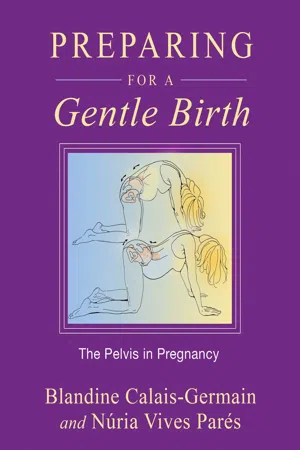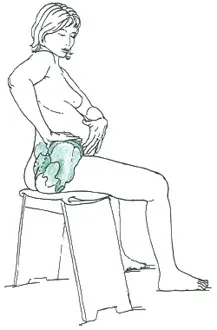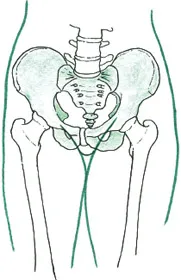
Preparing for a Gentle Birth
The Pelvis in Pregnancy
- 192 pages
- English
- ePUB (mobile friendly)
- Available on iOS & Android
About this book
An illustrated hands-on guide to the dynamics of the female pelvis for expectant mothers, midwives, and birth professionals • Provides fully illustrated exercises to help the expectant mother prepare her pelvis for birth and gain confidence in her body's innate ability to birth her child • Details the anatomical intricacies of the female pelvis and its capabilities for expansion and return to its original form • Presents movements and positions to ease discomfort, enhance the productivity of contractions, aid the internal expansion of the pelvis, and prevent and treat issues that may arise such as "failure to progress" The dynamic power of the female pelvis is the key to a gentle birth. Throughout pregnancy, hormones soften the ligaments and joints of the pelvis in preparation for labor, a time when the four bones of the pelvis--the two ilia (hip bones), the coccyx (tailbone), and the sacrum--do their intimate dance of release, rotation, and counter-rotation around the soon-to-be newborn. In this hands-on guide based on 15 years of research and workshops in maternity wards, movement teachers and health professionals Blandine Calais-Germain and Núria Vives Parés detail the anatomical intricacies of the female pelvis and its capabilities for expansion and return to its original form. Providing fully illustrated exercises to help the expectant mother prepare for this pelvic transformation and gain confidence in her body's innate ability to birth her child, they also present a variety of movements and positions for use during the different stages of labor to ease discomfort, enhance the productivity of contractions, aid the internal expansion of the pelvis, and prevent and treat issues that may arise such as "failure to progress." Ideal for the expectant mother and her birthing partner, this book will be a welcome addition to the library of every midwife, obstetrician, doula, and movement professional who teaches pregnant women.
Frequently asked questions
- Essential is ideal for learners and professionals who enjoy exploring a wide range of subjects. Access the Essential Library with 800,000+ trusted titles and best-sellers across business, personal growth, and the humanities. Includes unlimited reading time and Standard Read Aloud voice.
- Complete: Perfect for advanced learners and researchers needing full, unrestricted access. Unlock 1.4M+ books across hundreds of subjects, including academic and specialized titles. The Complete Plan also includes advanced features like Premium Read Aloud and Research Assistant.
Please note we cannot support devices running on iOS 13 and Android 7 or earlier. Learn more about using the app.
Information

- The two iliac bones, situated in the front, on the sides, and even a bit in the back
- The sacrum, situated in the back and in the middle
- The coccyx, which extends the sacrum toward the lower part of the pelvis




Table of contents
- Cover Image
- Title Page
- Dedication
- Epigraph
- Testimonials
- Table of Contents
- A Note to Doctors, Midwives, and Mothers
- Foreword by Carmen Barona Vilar
- How to Use This Book
- Testimonials
- Introduction: The Pelvis in Motion
- Chapter 1. What Is the Pelvis and What Does It Do?
- Chapter 2. The Parts of the Pelvis
- Chapter 3. How Does the Pelvis Move?
- Chapter 4. How Does the Area around the Pelvis Move?
- Chapter 5. The Pelvis Changes Shape during Childbirth
- Chapter 6. The Principal Positions of Childbirth
- Chapter 7. The Movements and Transformations of the Pelvis
- Chapter 8. The Three Star Positions: Standing, Sitting, Kneeling
- Anatomy of Movement Certification Programs
- Footnotes
- Bibliography
- About the Authors
- About Inner Traditions • Bear & Company
- Books of Related Interest
- Copyright & Permissions